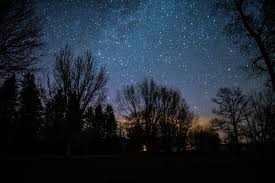|
Whatever we think we know about this pandemic is out of date. The number of Americans with confirmed coronavirus topped 100,000 in March. Before they showed symptoms, many of them infected others, who in turn infected more. Each confirmation might mean at least half a dozen infections not yet visible, growing exponentially.
Gaze into the night sky. Your perception of the nearest visible star is obsolete. Its light began the long journey toward Earth more than four years ago. Isn’t much of life like that? Writers chase a publishing fad only to see it pass before their work sees print. The child I last saw two years ago is no longer the child I thought I knew. Stock bubbles crash from everyone trying to cash in on yesterday’s hot tip. I admit to having been among the skeptics who once thought coronavirus worries overblown. The numbers were tiny compared to flu. I was wrong. My data was out of date—and always will be. Barring core beliefs and eternal truths, all we can know with any approach to certainty has already passed.
5 Comments
In The Naked Sun by Isaac Asimov, each human on Solaria stays far from everyone else. To see or be seen in person is disgusting and obscene. Instead, attended by robots, humans “view” one another remotely through holograms.
I thought of Solaria when my branch bank closed its face-to-face drive-up window in favor of video screens and pneumatic tubes, presumably for security. I think of it now as we talk to neighbors via devices instead of walking across the lawn. One character in The Naked Sun eventually escapes to a saner, more nurturing planet. Our escape shouldn’t require leaving Earth, but there’s another possibility. How long would it take for our psyches to adapt, elevating physical closeness from risky or imprudent to a lasting cultural taboo? What might future novelists write about the Great Coronavirus Pandemic of 2020? Its major effects on daily life make it ripe for historical fiction. Can you suggest a one- or two-sentence summary for a plot?
For inspiration, or to fill the time offered by cancellations and self-isolation, these five novels portray ordinary folk caught up in past epidemics:
Coronavirus is respiratory; poliovirus is intestinal, with occasional spread to bloodstream and nerves. COVID-19 is new; polio has paralyzed humans for millennia. Having written about polio history for years now, I see differences but also similarities.
Both diseases are highly infectious, caused by viruses that mutate, more susceptible to prevention than cure. Both can be spread by an infected person who shows few or no symptoms. Americans in the 1950s avoided swimming pools and movie theaters for fear of polio. Many today cancel travel and meetings in response to coronavirus. Fads fill the vacuum when scientists say, “We don’t know yet.” To prevent the spread of polio before it was understood, communities promoted fly-swatting campaigns, sprayed zinc sulfate up children’s noses, and killed thousands of cats and dogs. Alleged protections against coronavirus include hairdryers, ultraviolet lamps, chlorine body sprays, garlic, and sesame oil. Of course none of it helps. Less colorful but wiser: Take your tips from CDC or WHO, and remember to wash your hands. Video: A newsreel clip from 1946 boasts of spraying everyone and everything with DDT to protect against polio. My last evening in San Antonio, the temperature dropped to the fifties. Winter raindrops dotted my hair. I wrapped my mid-weight coat tighter as I huddled at the bus stop, impatient for the warm, dry hotel.
My fourth day home in Wisconsin, the temperature rose into the fifties. I waded through snowmelt along the paved trail by Pheasant Branch, exchanging smiles with men pushing strollers and women walking dogs, drawn outside by the promise of spring. Winter is peak writing season, free of the temptation to garden or roam forest paths. But winter is as much about expectations as about calendar or thermometer. Context is everything. |
AuthorI'm a historian who writes novels and literary nonfiction. My home base is Madison, Wisconsin. Archives
July 2024
|

 RSS Feed
RSS Feed